The Galapagos was Mike’s number one pick when we were first planning this trip. He didn’t have to try hard to convince me… awesome animals and beautiful landscapes, sign me up! I was a little hesitant based on our budget, but after working through the numbers it was a go and our big-ticket item of this year-long adventure.Â

We opted to take an 8-day cruise of the western islands with a locally owned company called Tip Top which was founded by the first person born on the islands – Rolf Wittmer. We would learn more about him and the first settlers on the island while watching a documentary on our first few nights on the cruise. It was drama filled with several un-solved murders and land struggles. Interesting to learn the background, and it was made even cooler to learn that our naturalist guide, Edu, was Rolf’s grandson.Â
Back to the actual adventure itself… We took a flight from Quito directly to Baltra island where our catamaran awaited us. Our boat had 15 guests with a crew of 10. We were pleasantly surprised with the size of our cabin and the nice common areas aboard including the bar and shady sundeck on the very top.
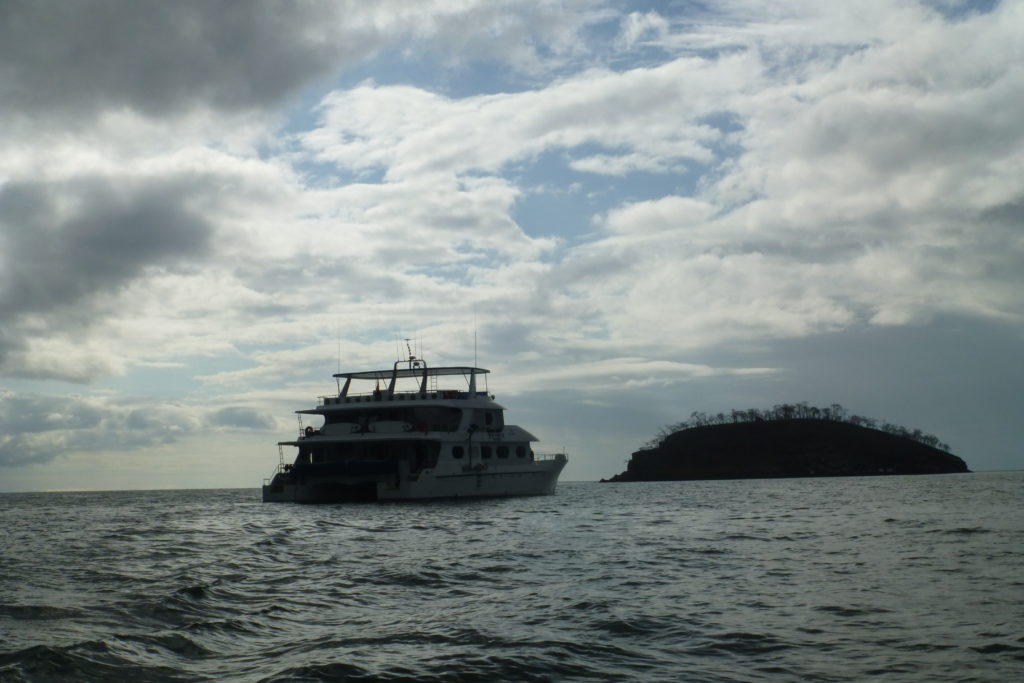

Our daily itinerary had us on the go for most of the day, which was great. We would wake up early for breakfast before taking the dingy boats to our morning location for our wildlife hike. Then we headed back to the boat for a morning snorkel before lunch. After lunch, the boat would navigate to our afternoon location, while I usually enjoyed the sundeck with an afternoon nap or reading. At our next location, we would hike again and sometimes have a second snorkel as well. Then back at the boat for everyone’s favorite reward… happy hour at the bar watching the sun set. Finally, we wrapped up the day with our daily briefing reviewing what we saw and learned during the day and going through the next day’s plan. Sometimes, we had some lectures as well to learn about fish or the volcanos/landscape.
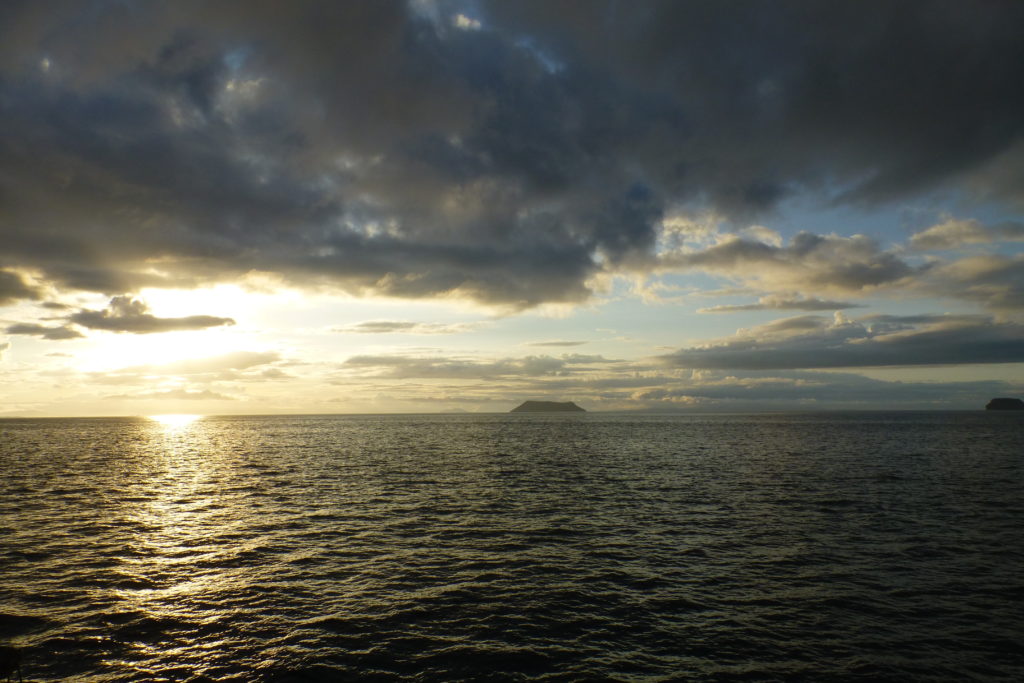

All of this was led by Edu, our amazing naturalist guide. He was very knowledgeable and a great teacher with tons of patience. He could keep the group organized and on track while never losing his sense of humor. He was super passionate about the environment and an expert diver. I really enjoyed learning from Edu.

The crew was also outstanding. They always had a smile on their face even when no one was looking. Our dingy drivers were constantly on the lookout for animals and ensured we safely got on and off the boats. The food was excellent, and we were well cared for onboard!
Staying on the topic of people, we also had great fellow passengers. There was a family of 5 celebrating their mother’s retirement, 2 brothers and their wives, a soon to be married couple, and a couple from Switzerland. One of the brothers and his wife were also named Mike and Sara, so we always had a good laugh over who was who! We really enjoyed getting to know everyone on board.
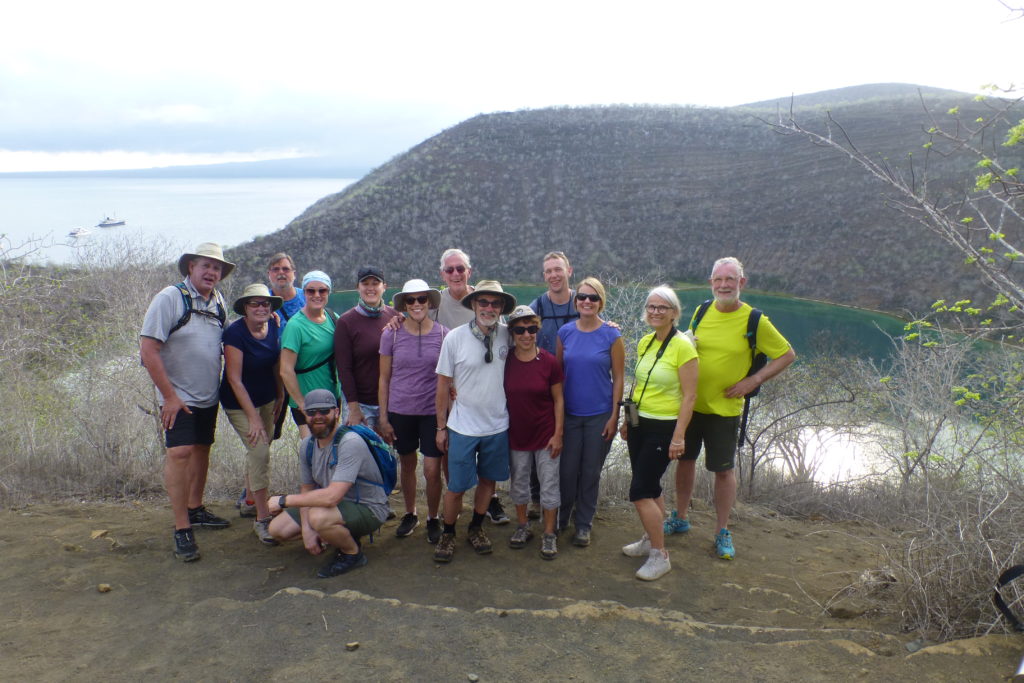
There are too many details to do a day by day in this blog, so I am going to break it up by animals and then our favorite places. Animals first…
Sea lions were everywhere and always a crowd favorite. I love how playful they can be and their beach waddle. They are very friendly and curious. The young pups were fun to watch playing with each other in the water. We also saw the males being quite territorial swimming in the water looking for females to mate. The females have 1 baby each year and will nurse up to 4 years (unusually long for sea lions). This causes quite a bit of sibling rivalry, so the number one killer of sea lions is your siblings. There is only so much food to go around and the bigger ones beat out the babies. We also learned that only blood relatives will cuddle on the beach. I never got tired of watching or taking pictures of these adorable animals!
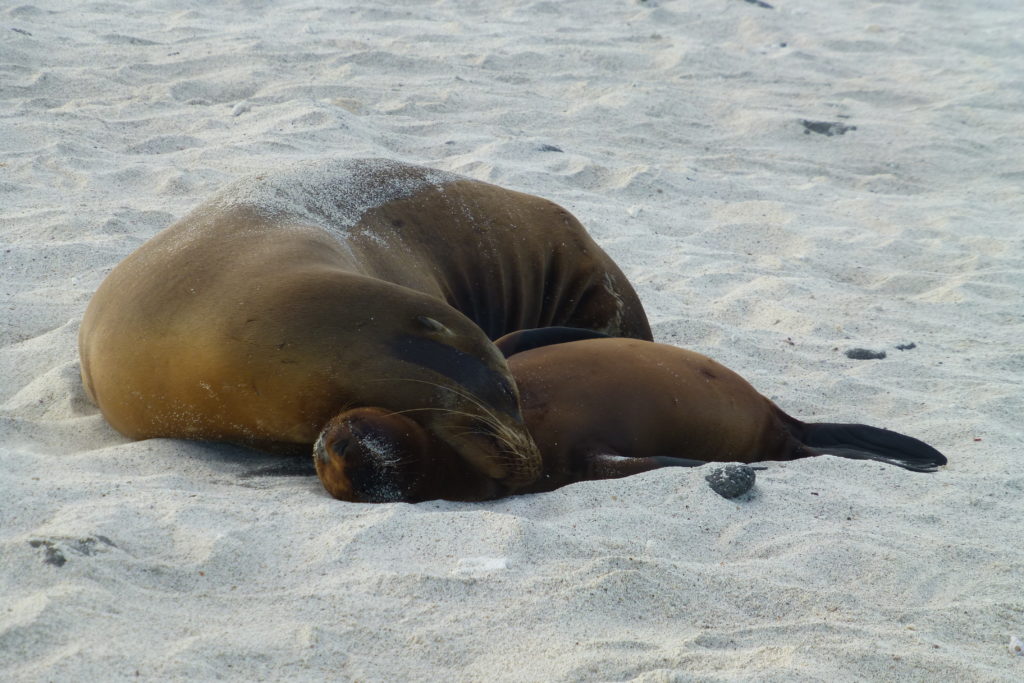

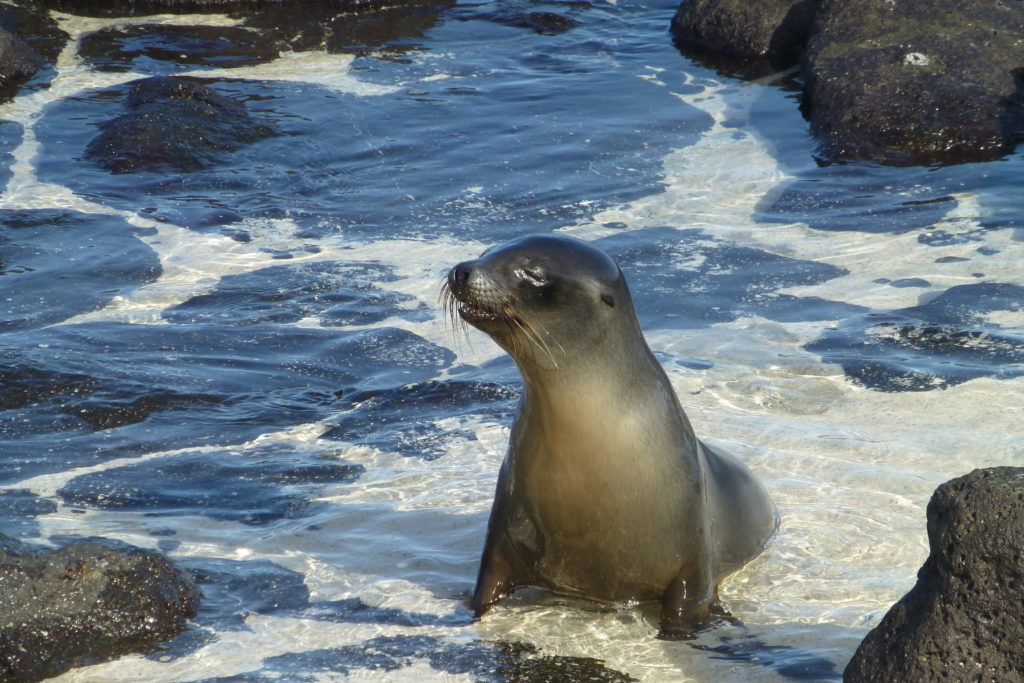
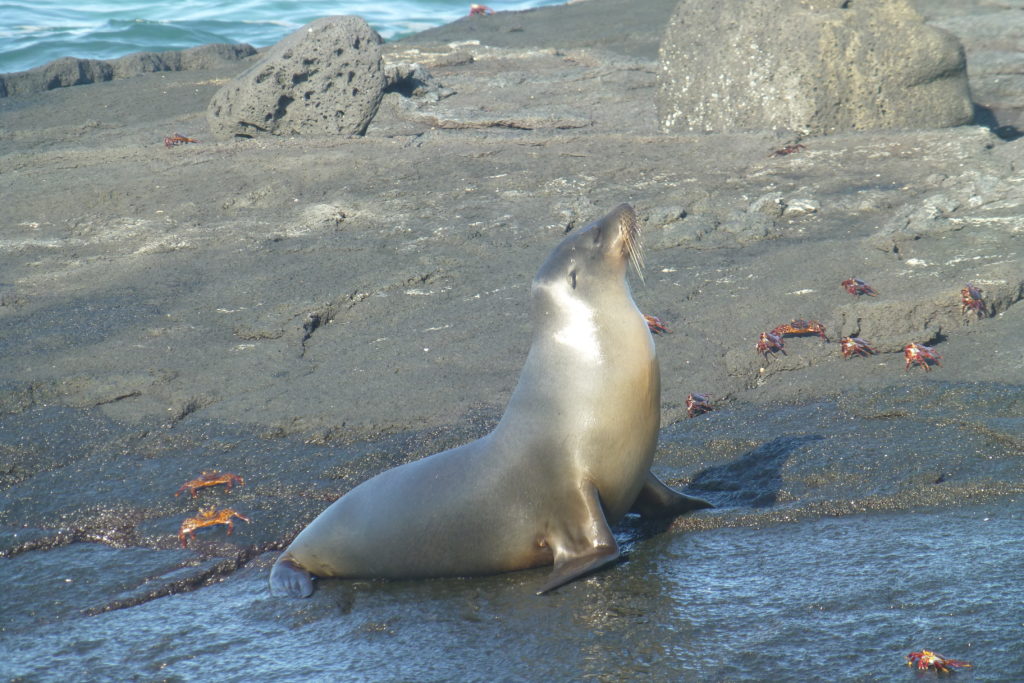
Marine Iguanas are the only lizards in the world that can swim and are endemic to the Galapagos. 60% of their body is their tail. They have long toes and sharp nails to hold onto the rocks. They swim to eat green algae usually once a day. The rest of the time, they spend sunning themselves. If the algae is not abundant, they can actually shrink their entire bodies, bones included so they need less to eat!

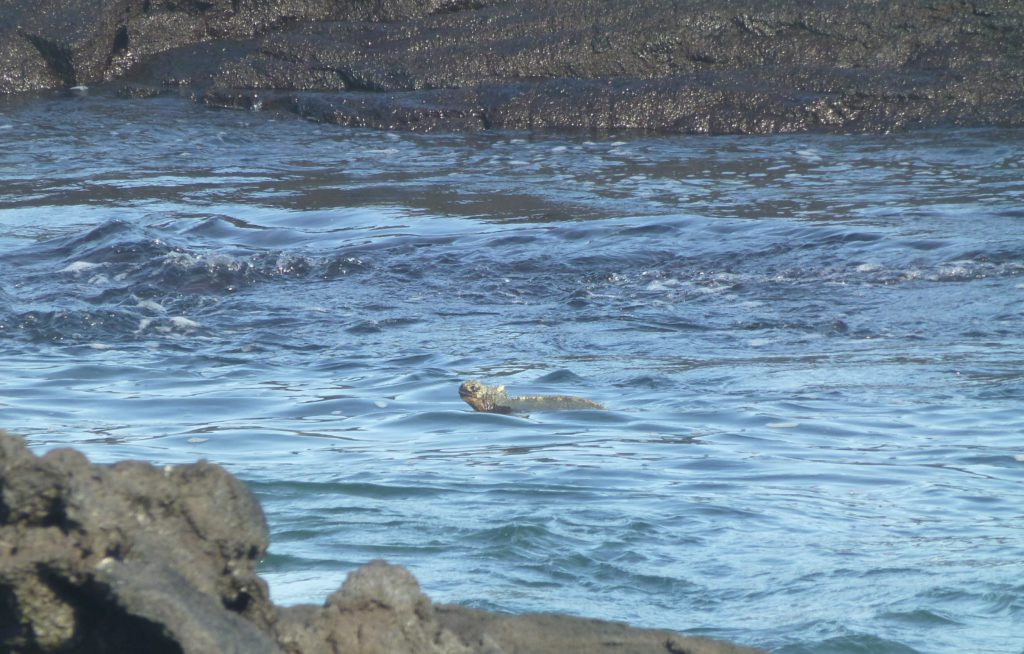
The males are territorial and will do a head bobbing dance to show who is boss. If another male challenges, they will get into a head-butting match to shove off the other males. The main male will do all the mating in the colony, but there are satellite males that come to mate when the main guy is busy. There is no parental care, so the babies need to find the colony on their own. They do not have the proper enzymes yet to digest algae, so they eat the adults’ poop!
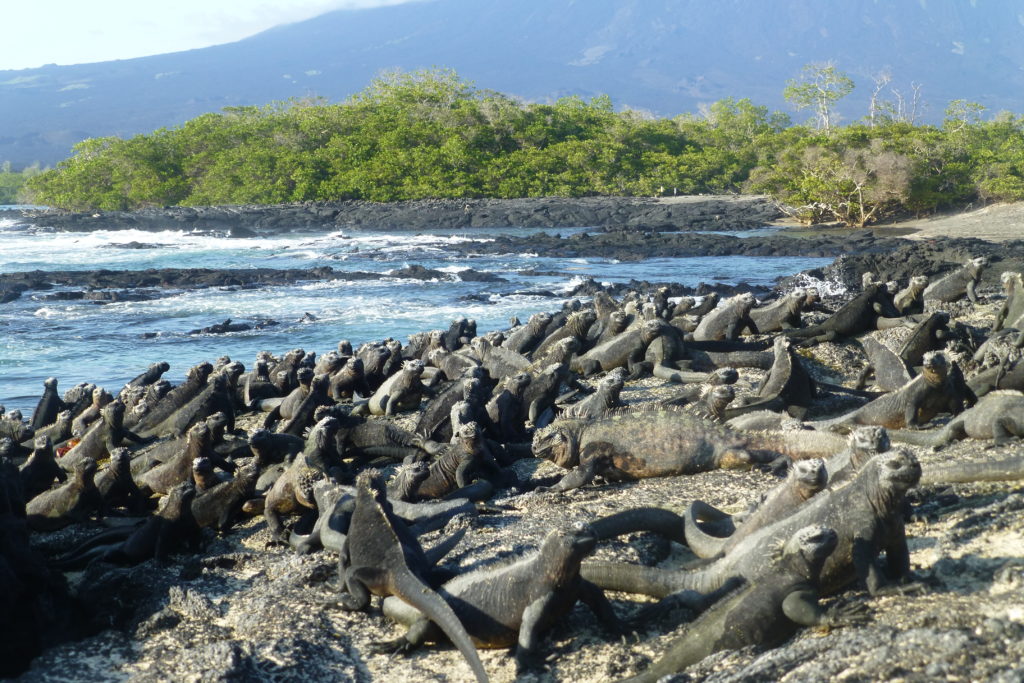
Galapagos Penguins are the northernmost penguins in the world. They are the second smallest behind the New Zealand species. Each penguin has a unique pattern of black dots on their belly like a fingerprint. They are easy to spot on the black rocks with their white bellies. I really enjoyed snorkeling with them. They were like little torpedoes under water! They also look a bit like a duck when their head is above water.



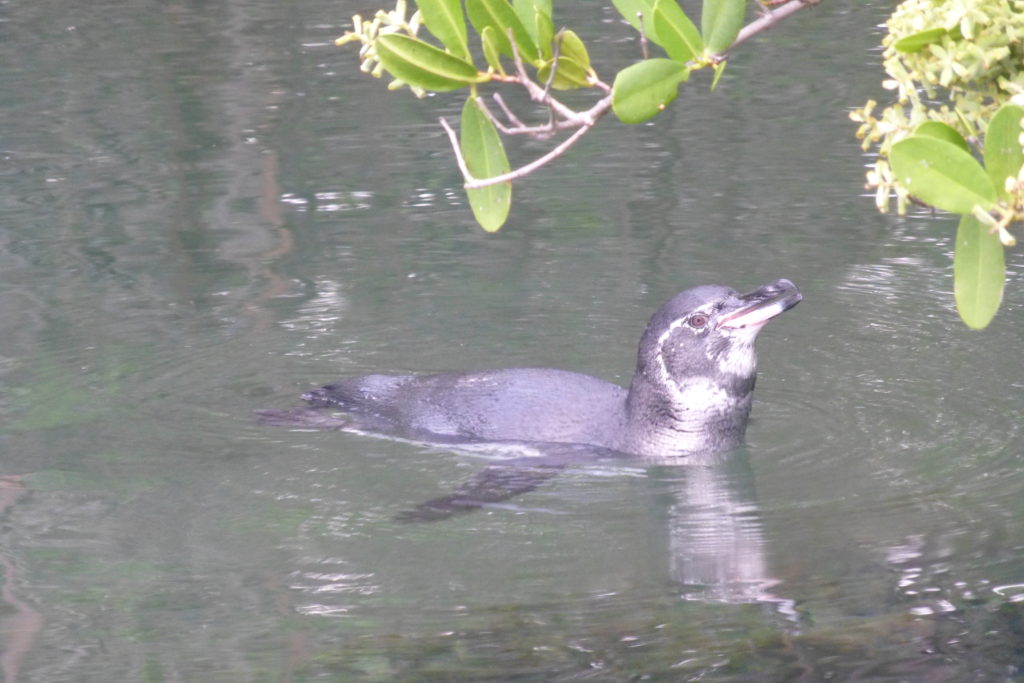
During one of our navigations, our captain spotted a pod of dolphins. They were feeding in one spot and there were over 100. The whole crew was on the decks watching and taking pictures. They were super active, jumping far out of the water. Plus they got really close to the boat, so we could see their elegance swimming under the water.

The animal that I was most excited about seeing was the Giant Tortoise. We saw females in the wild in Urbina bay as they were close to the beach in the grass where the soil is softer for them to dig their nests. They are massive! They often live to 150 years old. You can get a gage of their age by their shell size and ripples. They have the opposite of tree rings… The less ripples the older they are. There is no parental care, and the mating takes up to 4 hours. Mike got to see the turtles “do it†on Santa Cruz! They have no vocal cords, so only make noise 2 times… grunting while they “do it†and hissing, made by expelling air, when they withdraw into their shell.
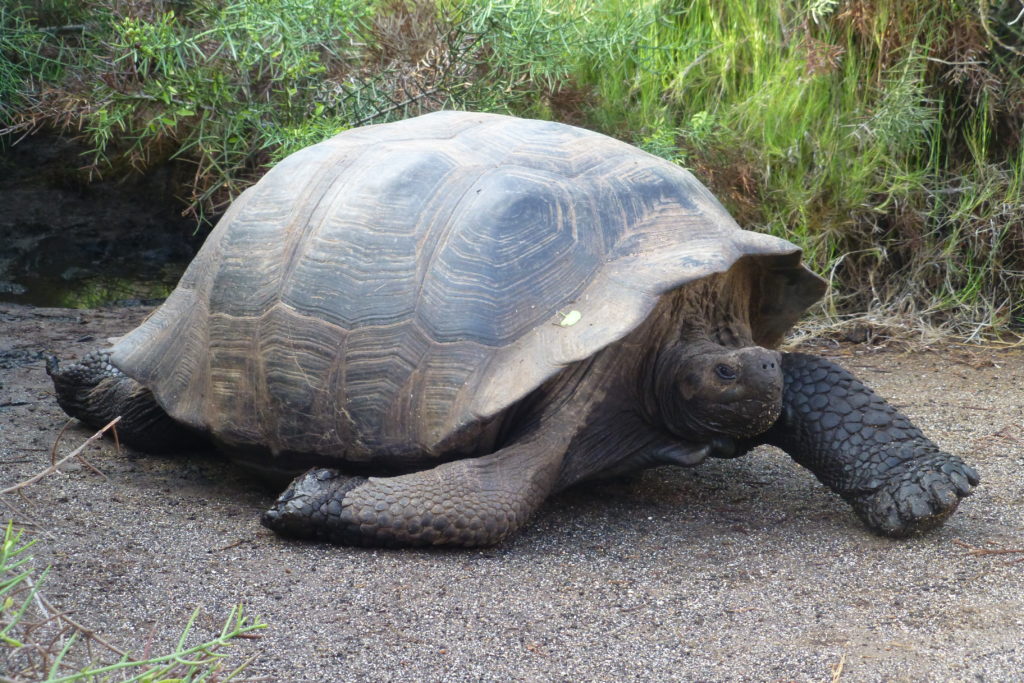
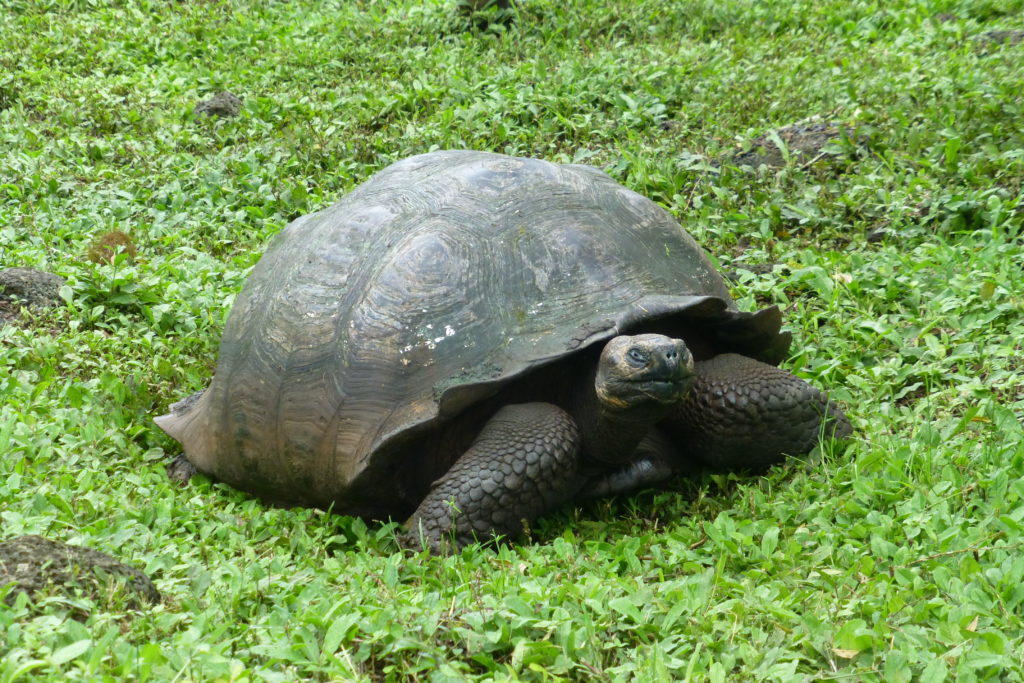
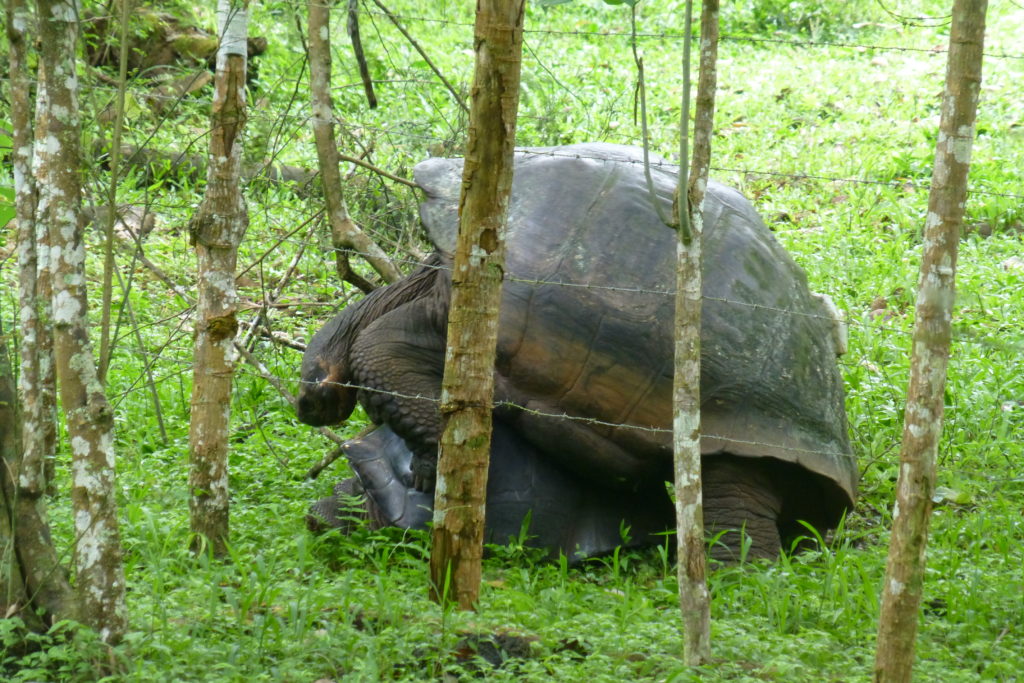
Land Iguanas are orange/yellow in color and are large! I had to navigate around quite a few who were hogging the trail! They primarily eat cactus and can climb to the very top.
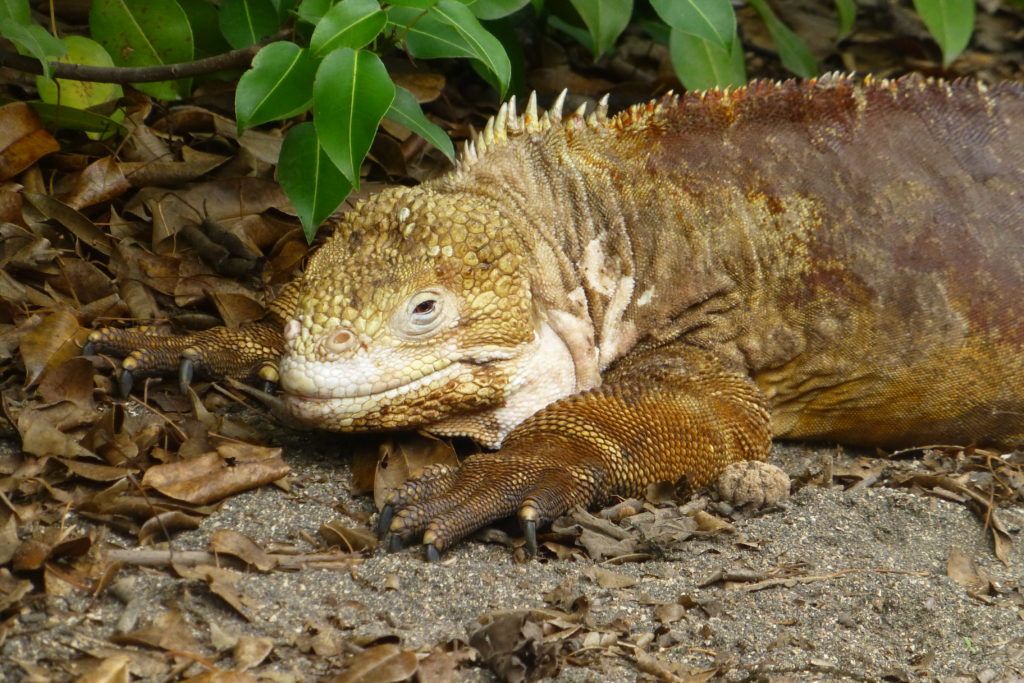

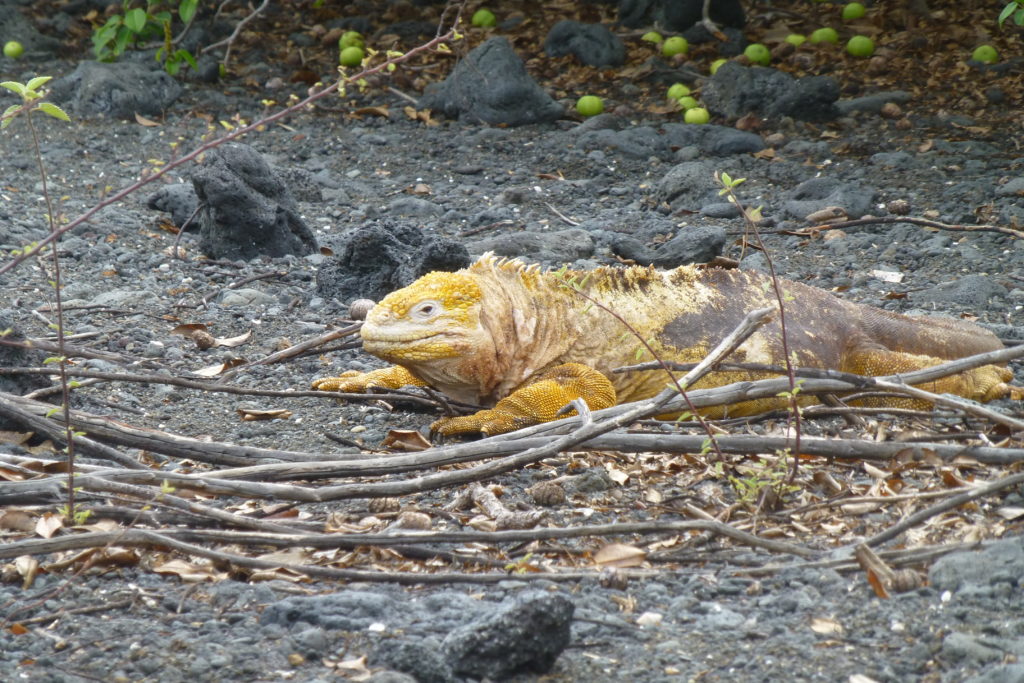
Fur Seals are sea lions, not seals. They are shyer than Galapagos sea lions and smaller. They have 2 hair follicles per pore, so they can stay super warm. Since they have such a heavy coat, they like to be in the shade when on land. They dive very deep for food so prefer to stay on rocks that have a steep drop off, unlike the sea lions who like the beach. The fur seals are graceful swimmers and pretty agile on the rocks as well.
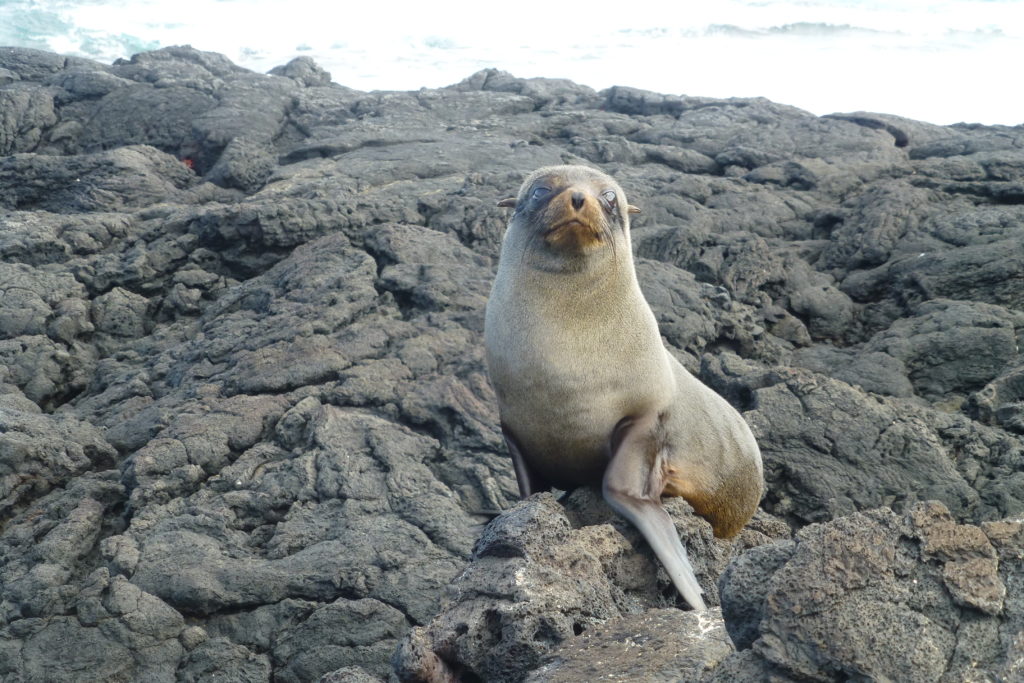

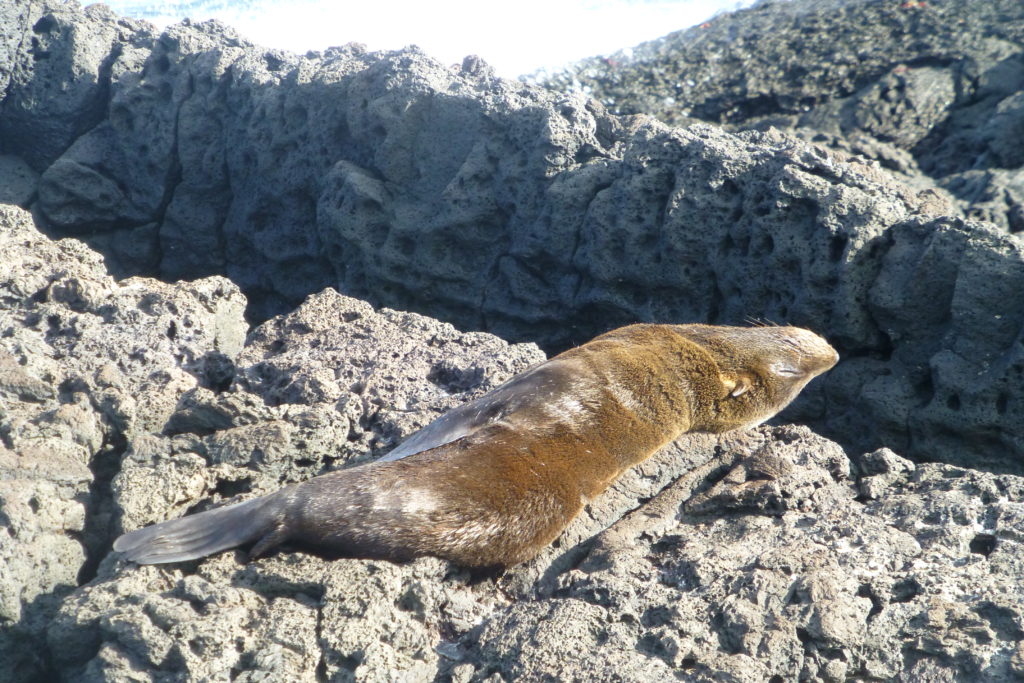

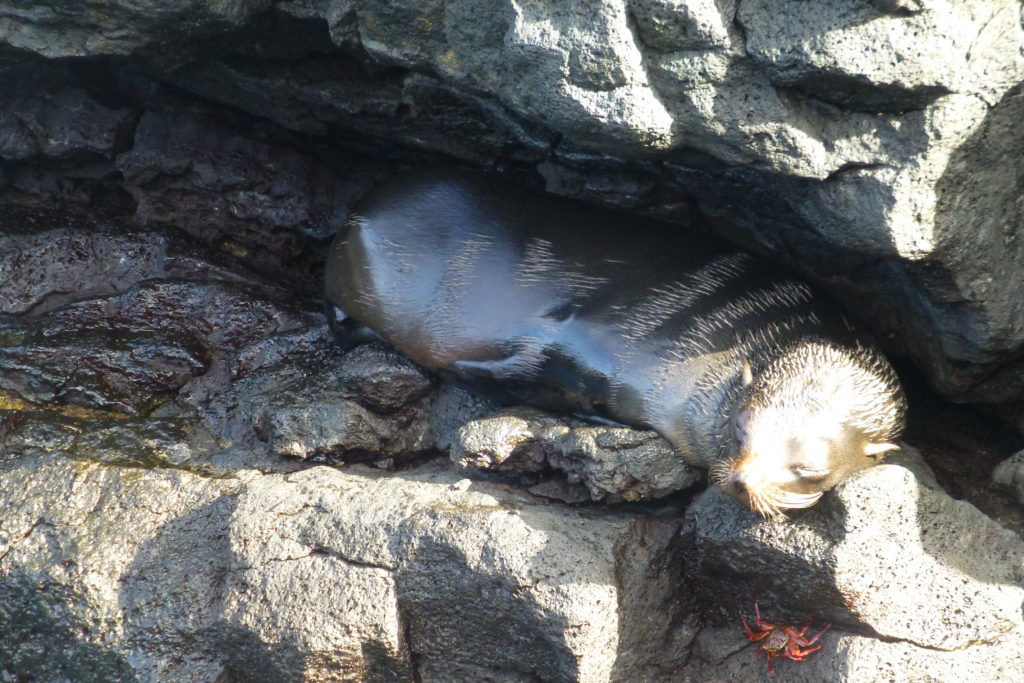
Adult Sally Lightfoot crabs are red and look so dramatic against the black rock. When they are small, they are black to blend into the rock. As they age, they get redder and redder. They are everywhere and make for fun pictures.
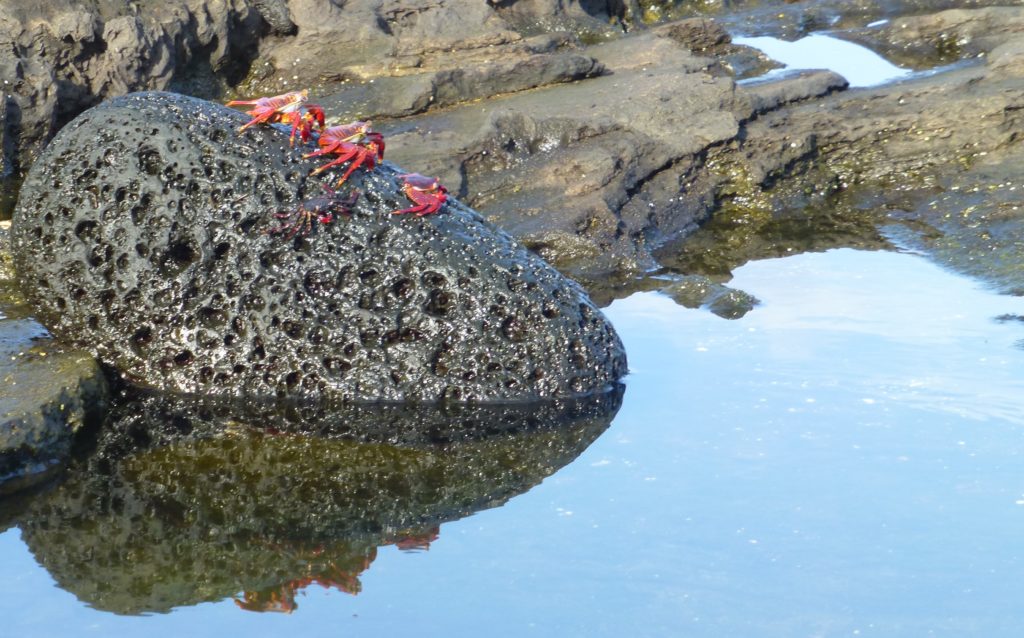
The Flightless Cormorant have little wings, but as the name implies, they cannot fly. It was originally thought that over time their wings shrank, but it was a form of dwarfism. Since food is so plentiful here and there are no predators, they were able to adapt to become very strong swimmers. The adult eyes are a startling turquoise color which is a big contrast to the black bodies. The males take care of the young, so the females can mate again. We were able to watch a juvenile near the shore hop into the water to get fed by dad! It looked a little like force feeding, but the kid was happy! Back on shore, he dried his wings while playing with the marine iguanas nearby!

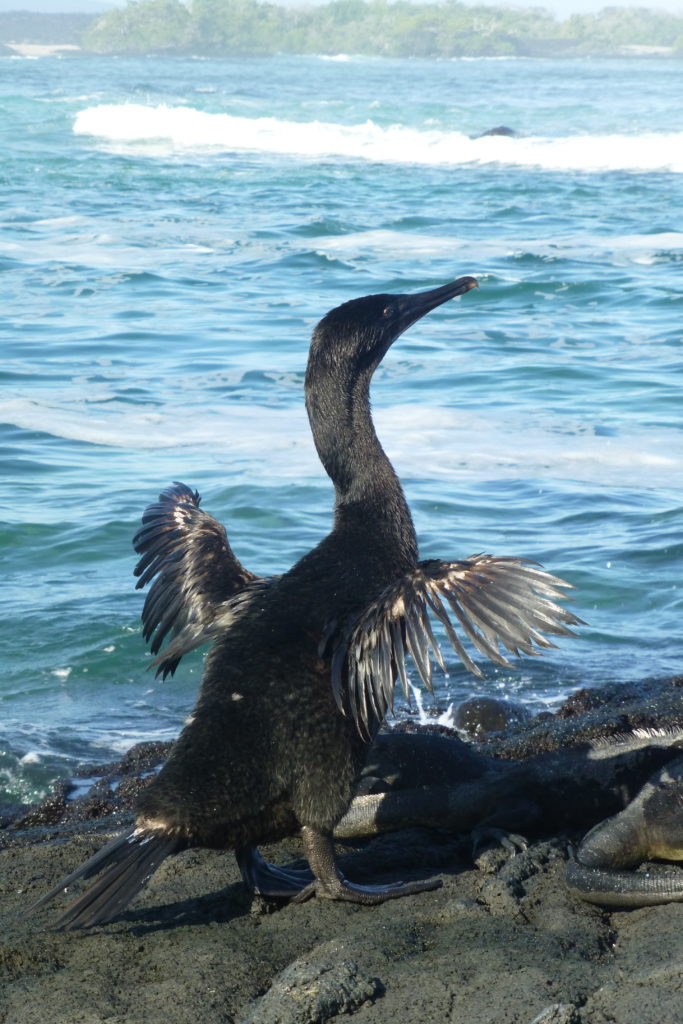
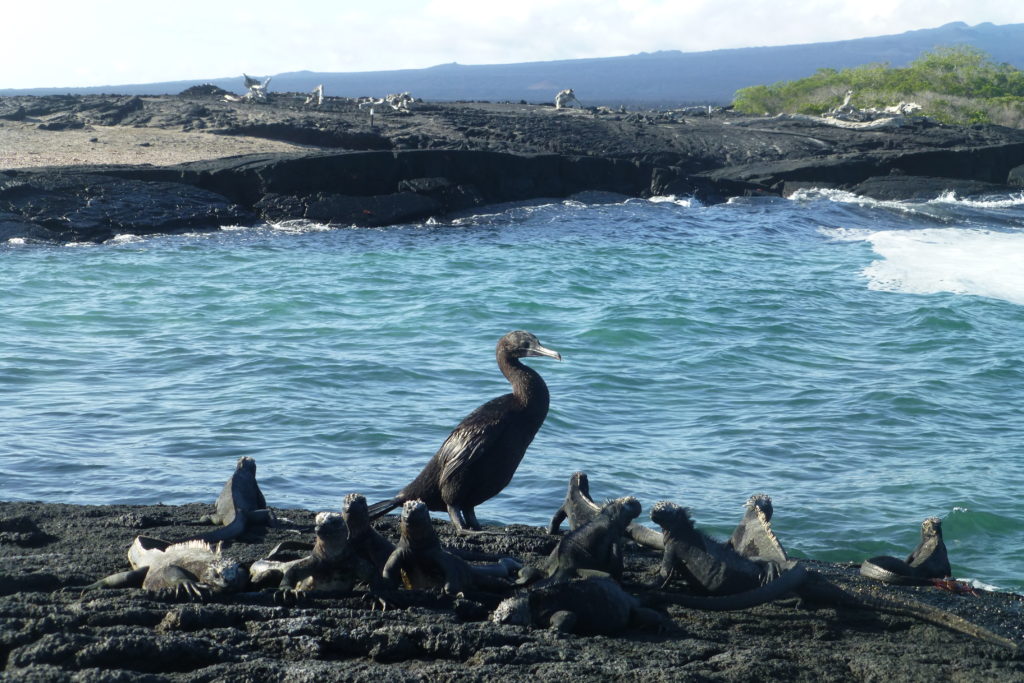
Blue footed boobies are famous for their booby dance – feet shuffling to attract the lady. No one knows why their feet are blue, the hardest color in nature to achieve. They are curious and even approached a fellow passenger to check out his vivid blue sneakers! They lay 2 eggs, but only 1 chick makes it – darn sibling rivalry again! The chicks are very white and fluffy.
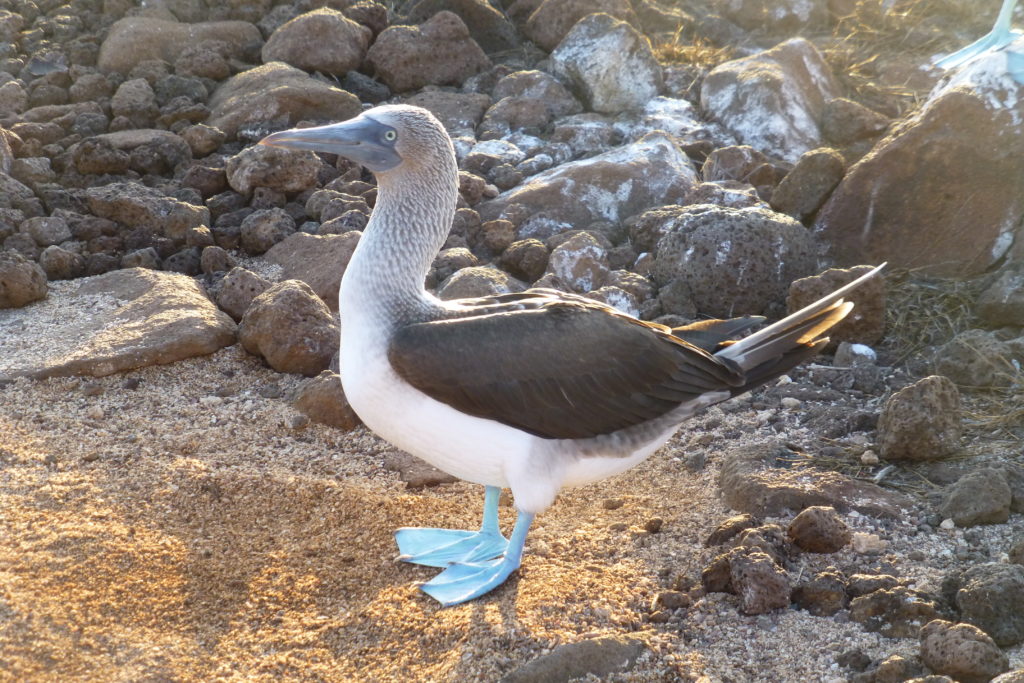
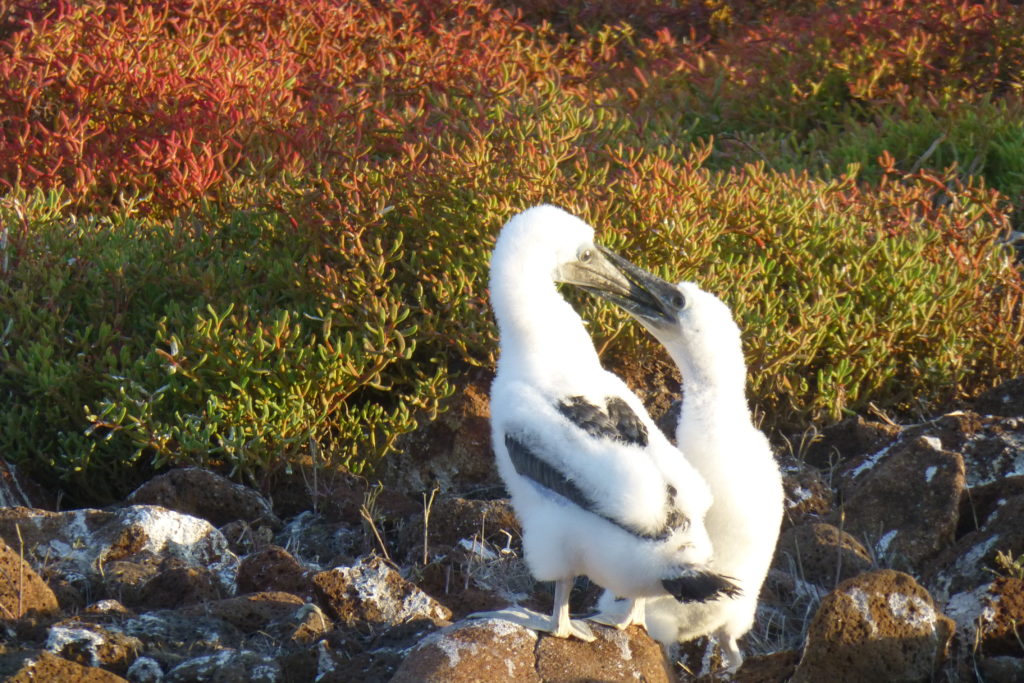
Frigates birds are very large and graceful fliers. They often flew alongside our boat during navigation. The males have a red chest that they can inflate into a red balloon to attract the ladies. Frigates cannot swim, so they are master stealers of other birds’ fish and catching their own flying fish!


On to the island highlights. I was surprised at the diversity that we saw in each place from new black lava flow, to red beach to white sand beach to mountains.
Sullivan’s Bay on Santiago Island. We hiked a lava flow from 100 years ago. Most of the lava was Pa’Hoe Hoe Lava which means smooth and rope like. It was neat to see the different patterns along the way.
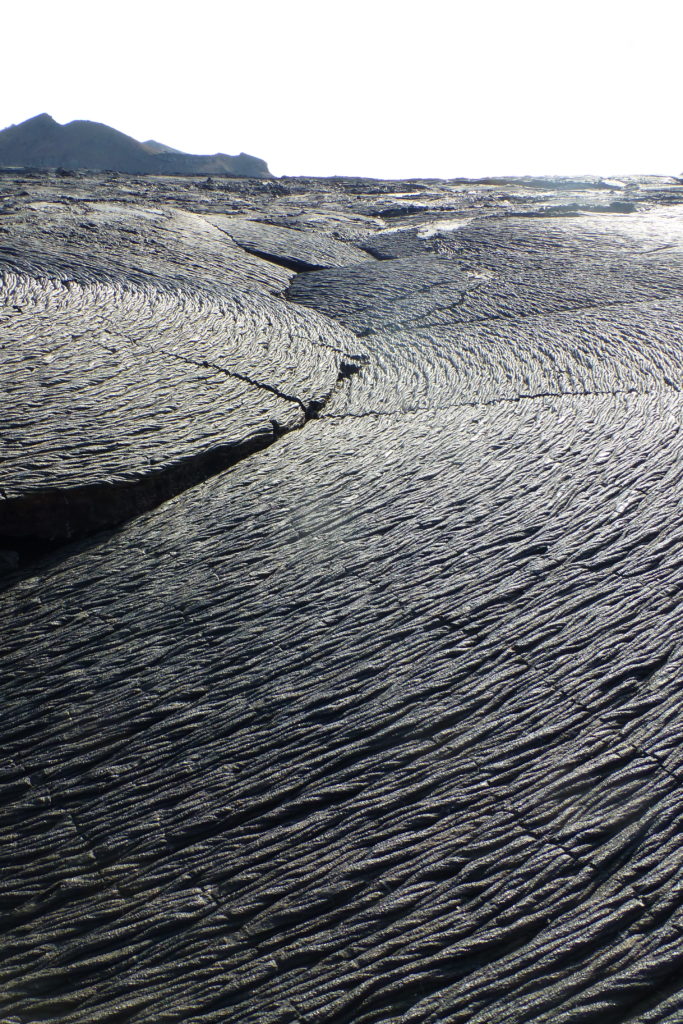
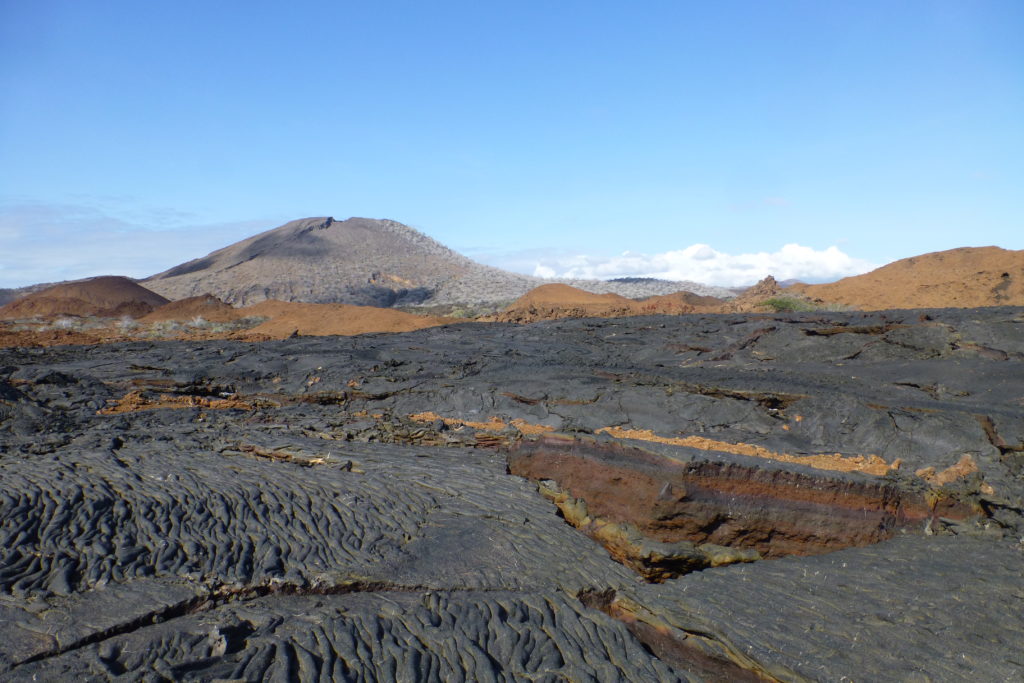
Espinoza Point on Fernandina Island. This is the youngest of all the islands and the volcano is currently active, but we couldn’t see anything from our location. The hike was great with a variety of landscape and animals. We saw loads of Marine Iguanas, and we could see them swim. We snorkeled here as well and swam with them in the water. We also saw tons of sea turtles and even a seahorse! The sea turtles would just swim under us while we observed from above.
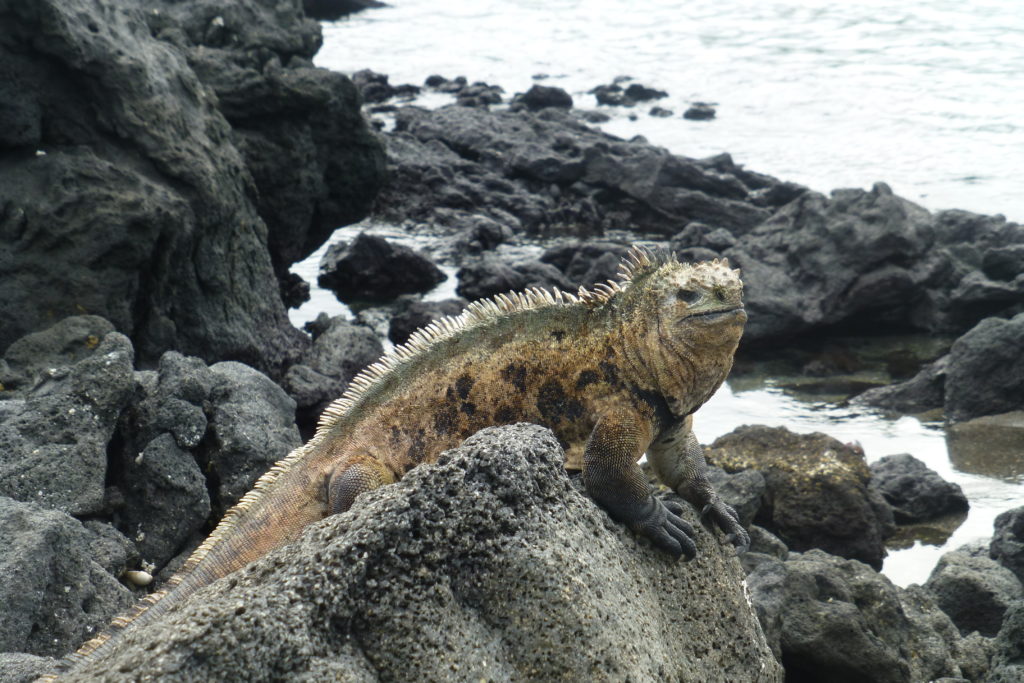
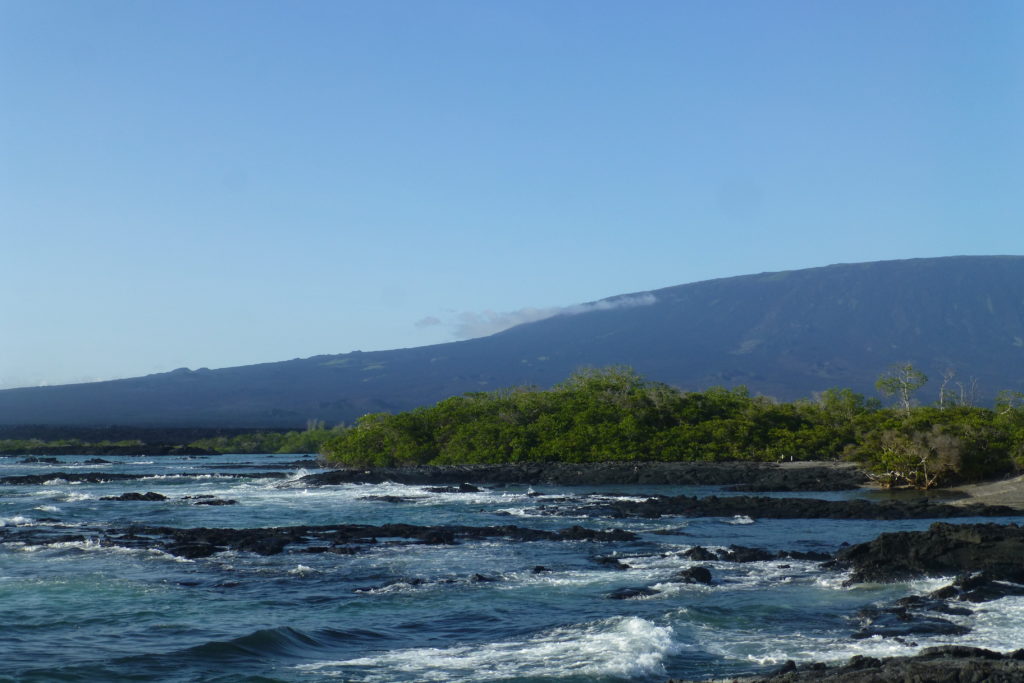
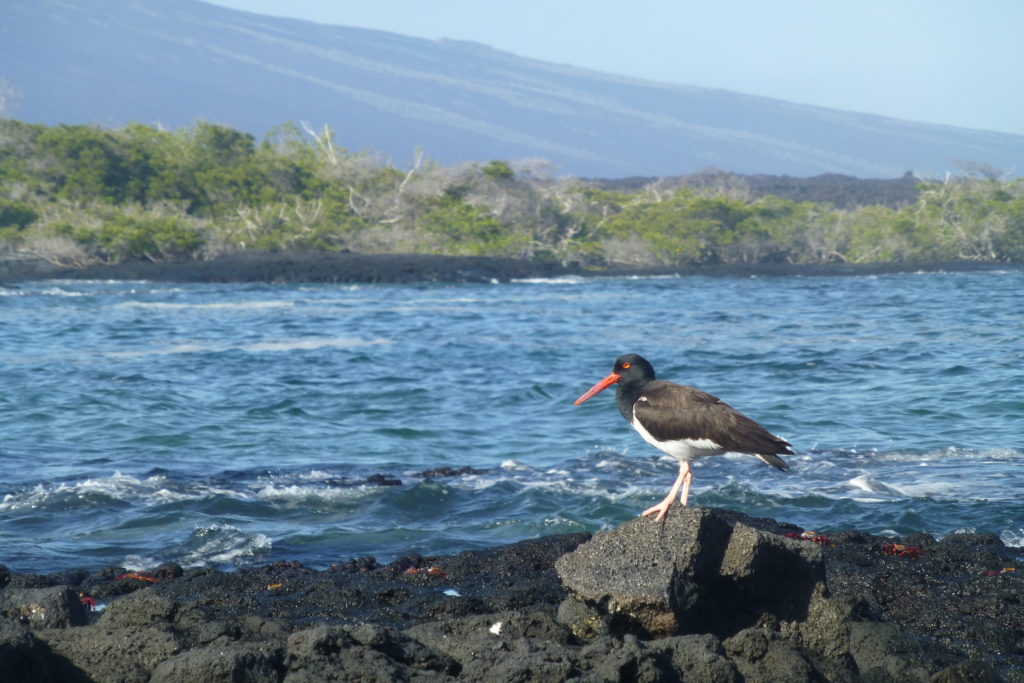
Elizabeth Bay on Isabella Island is fragile mangrove inlet which we explored via the dingy. Highlights included watching a school of golden rays, penguins swimming everywhere and sea turtles.
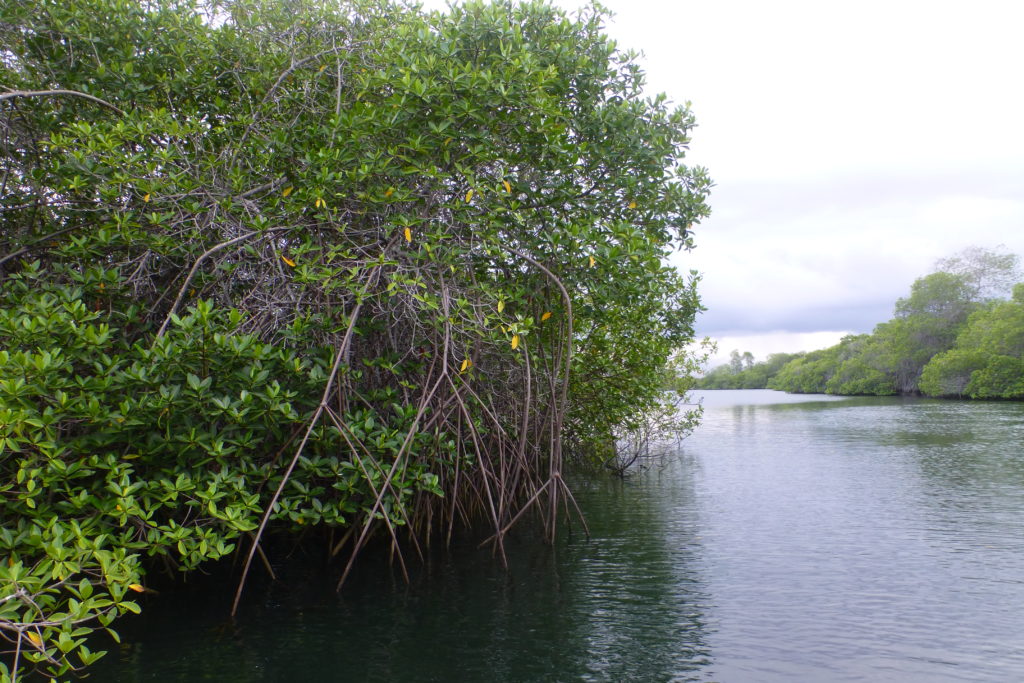
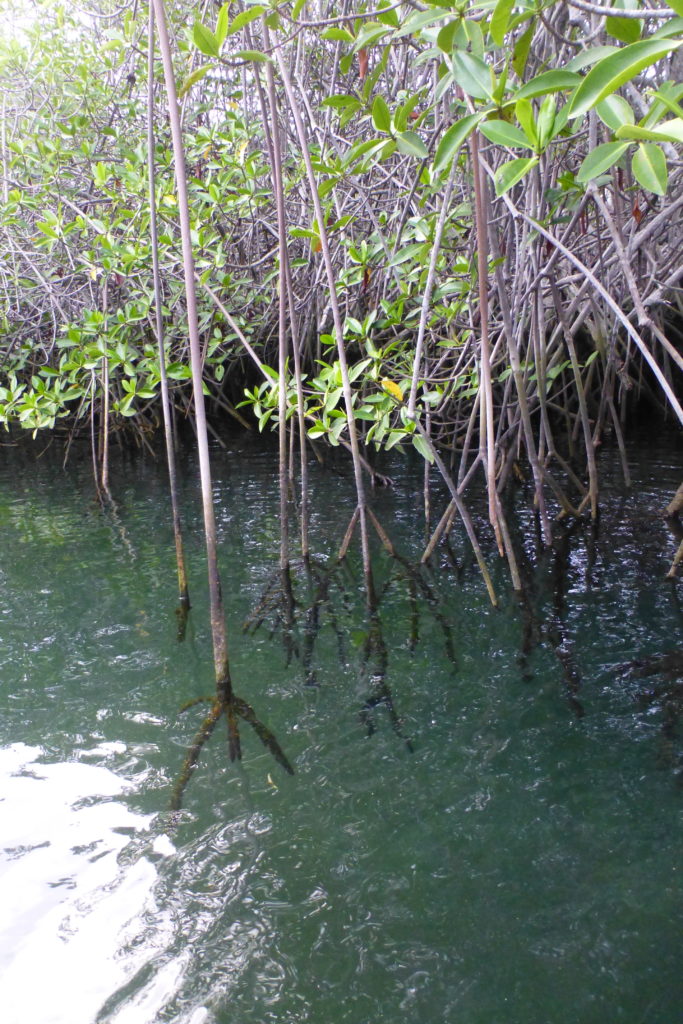
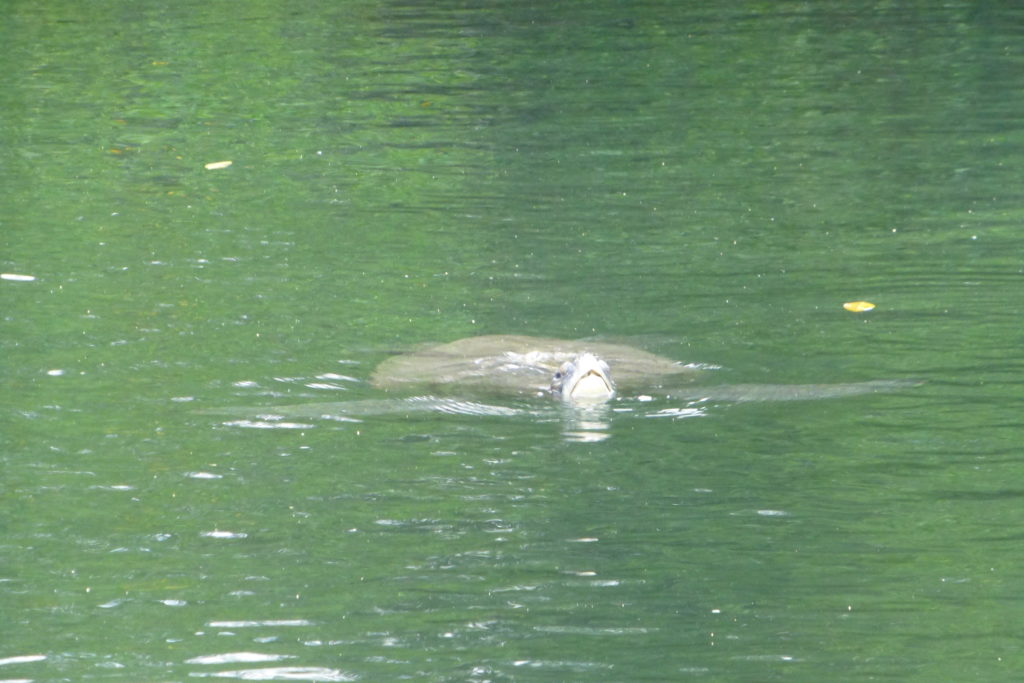
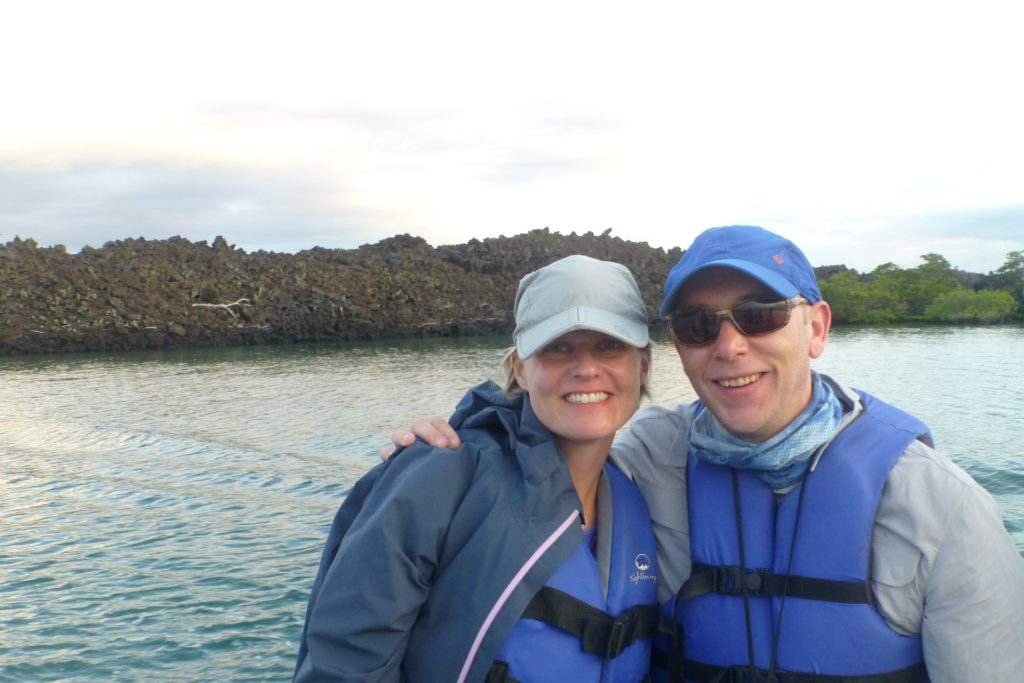
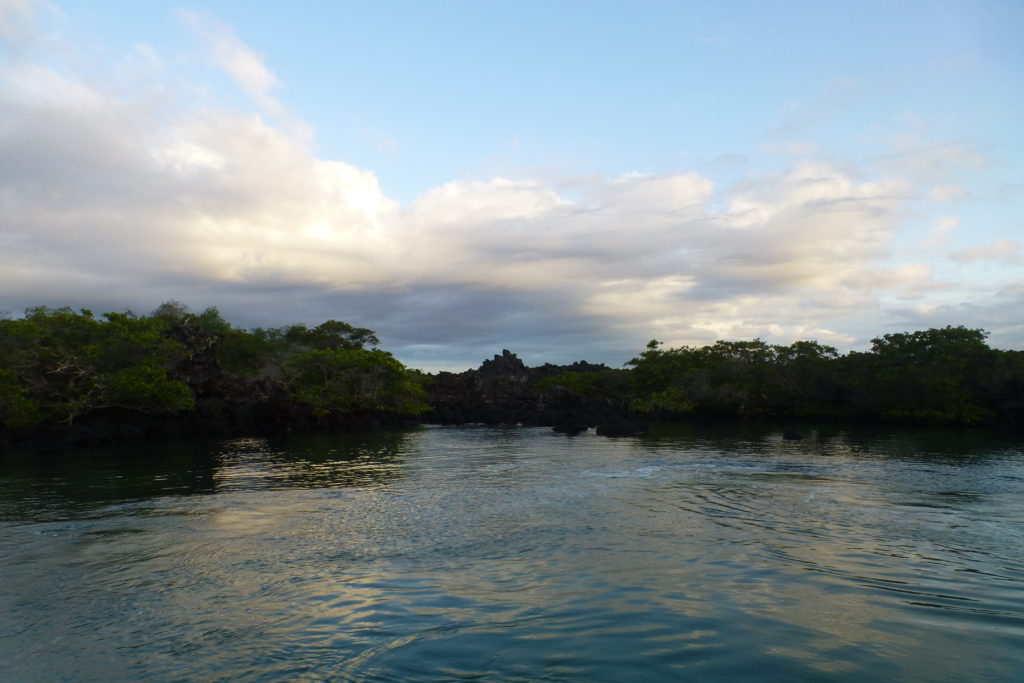
Urbina Bay, Isabella Island – Our longest hike which was a really awesome loop covering a variety of ground. We started on a sandy beach, then grassy lands into green spine brush and finishing on a rocky beach with some scrambling!
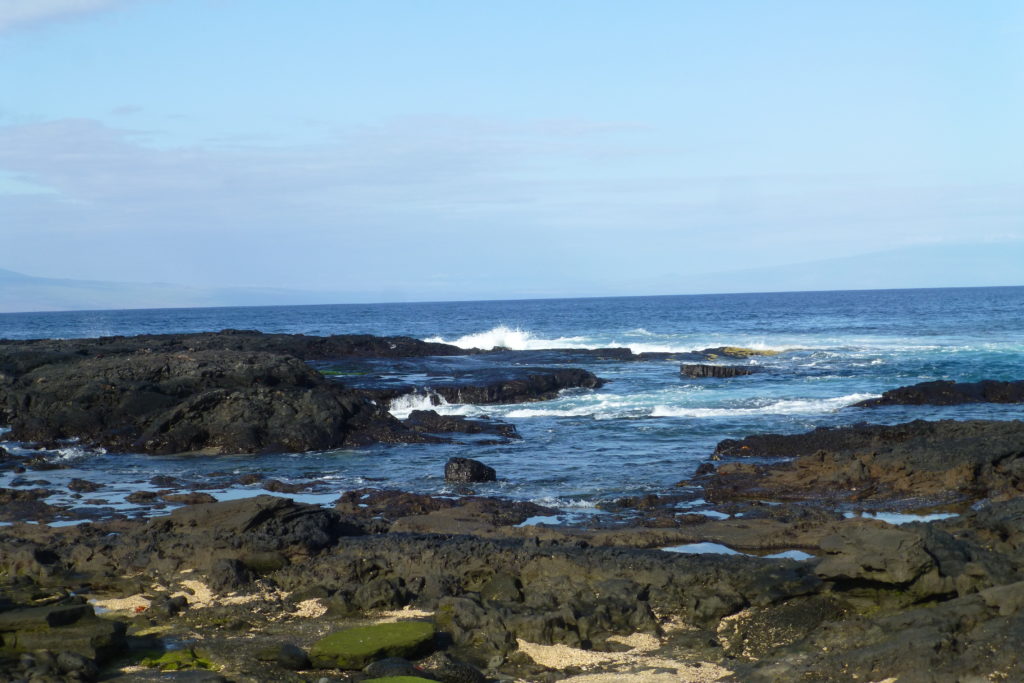
Tagus Cove, a very protected inlet where pirates anchored. In fact, most boats used this cove over the years and even carved/painted their boat name and year of visit in the rock. The oldest is from 1836. We hiked up to a viewpoint of the cove and Darwin Lake. The lake was created by a tsunami a long time ago and is brackish. The color was gorgeous almost reminding me of a glacier lake.
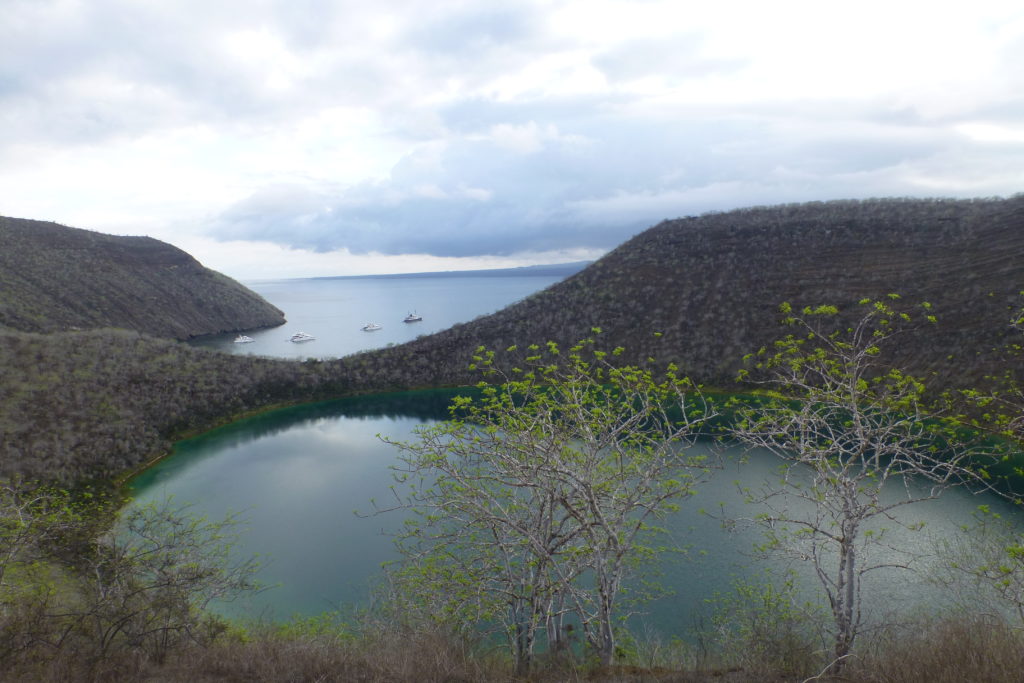
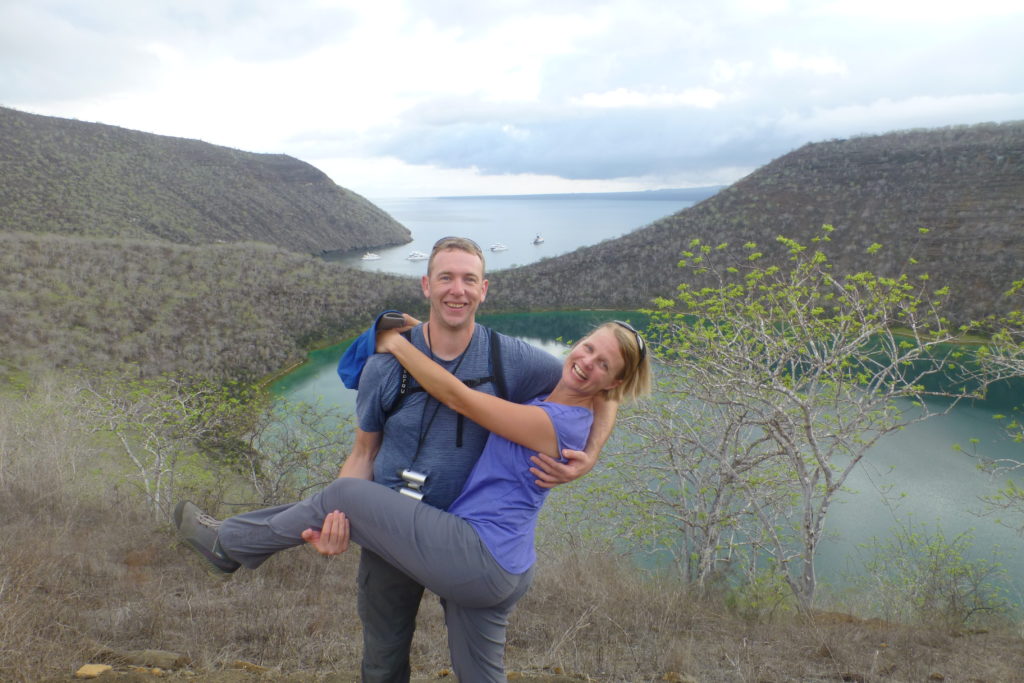
Bartolome Island was a fun stop with a great snorkel. We saw lots of fish, penguins and marble stingrays. We also hiked to the summit for an amazing view of Pinnacle Rock and Sullivan’s Bay.
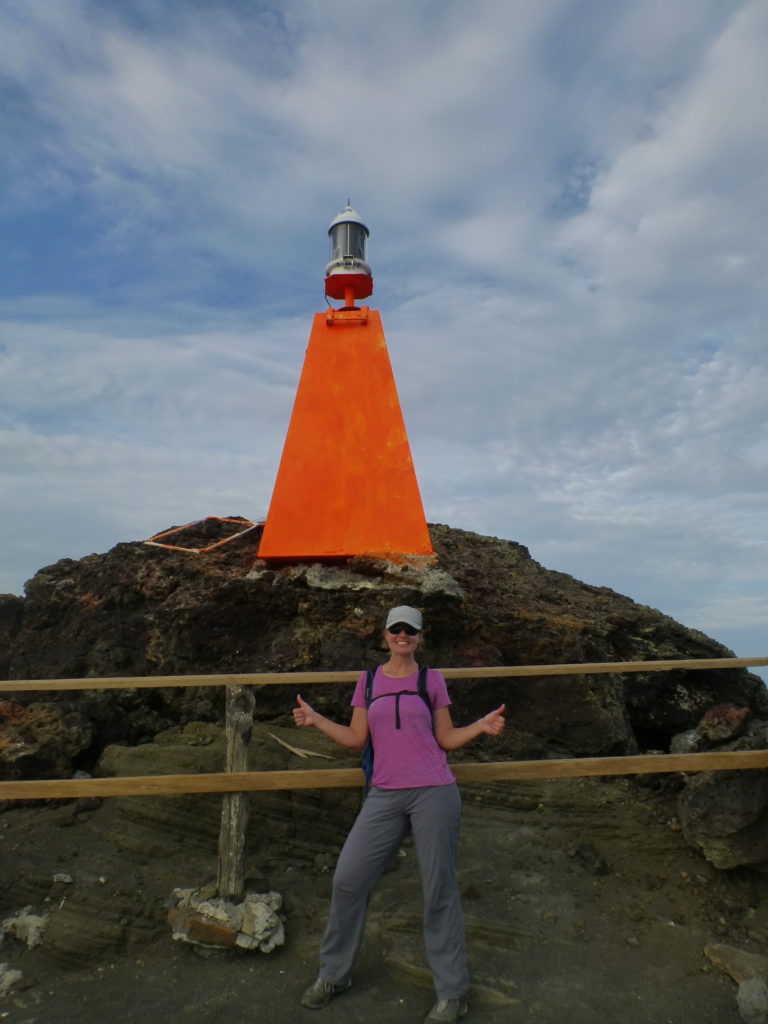


Chinese Hat, Santiago was a mellow hike with tons of baby sea lions. One was only about 1 month old and was still trying to figure out how to balance and walk on his flippers. He was super adorable. I really enjoyed the snorkeling here with warm, calm water and our first good look at white tailed sharks! We saw several with the largest 4’ long! Super cool!
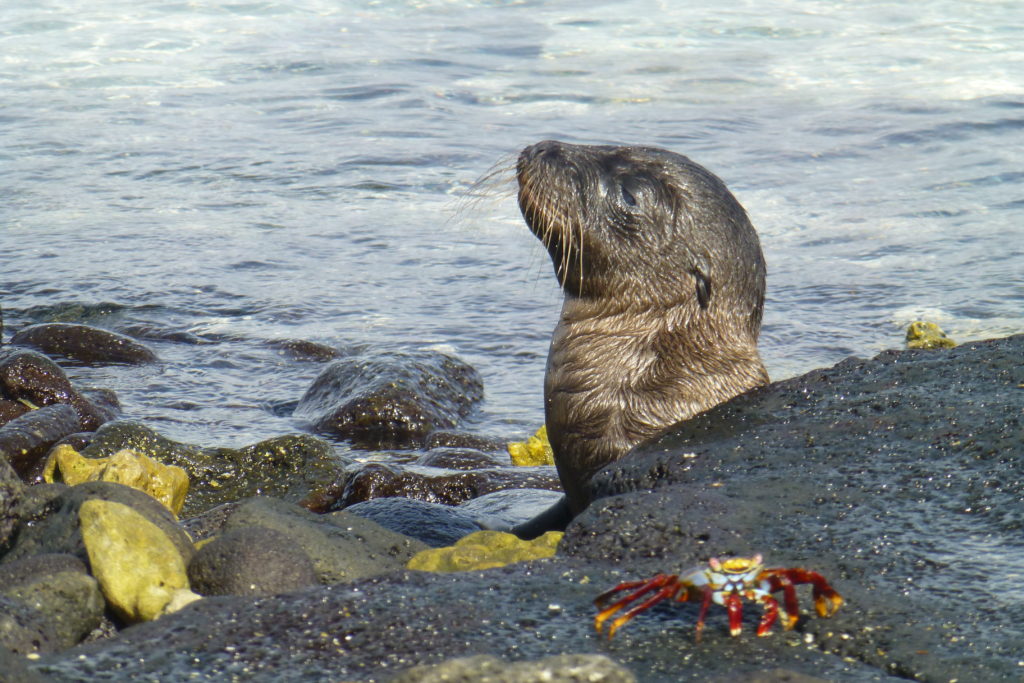

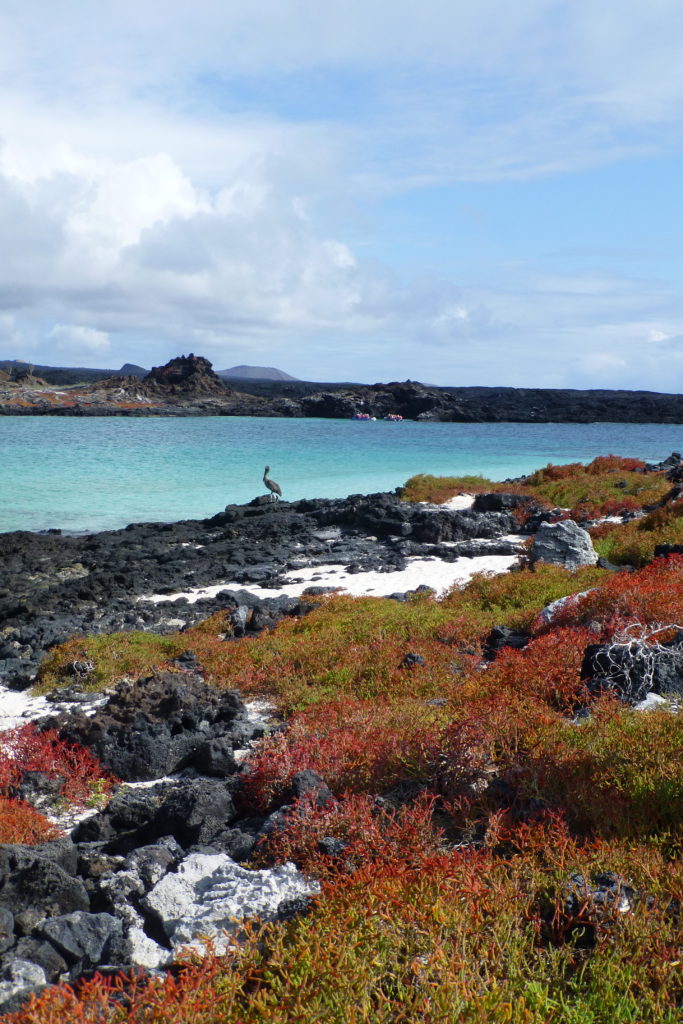
Darwin Breeding Center. Their main goal is to help animal/plant population that are in critical danger. They are working island by island to control invasive animals/plants, re-plant native vegetation and reintroduce species or help species grow their population. The highlight was seeing the baby tortoises! The smallest were only 1 month old and were the size of softball. The tortoises stay in captivity until they are 5 years old and then released to their island. They have over a 90% success rate!
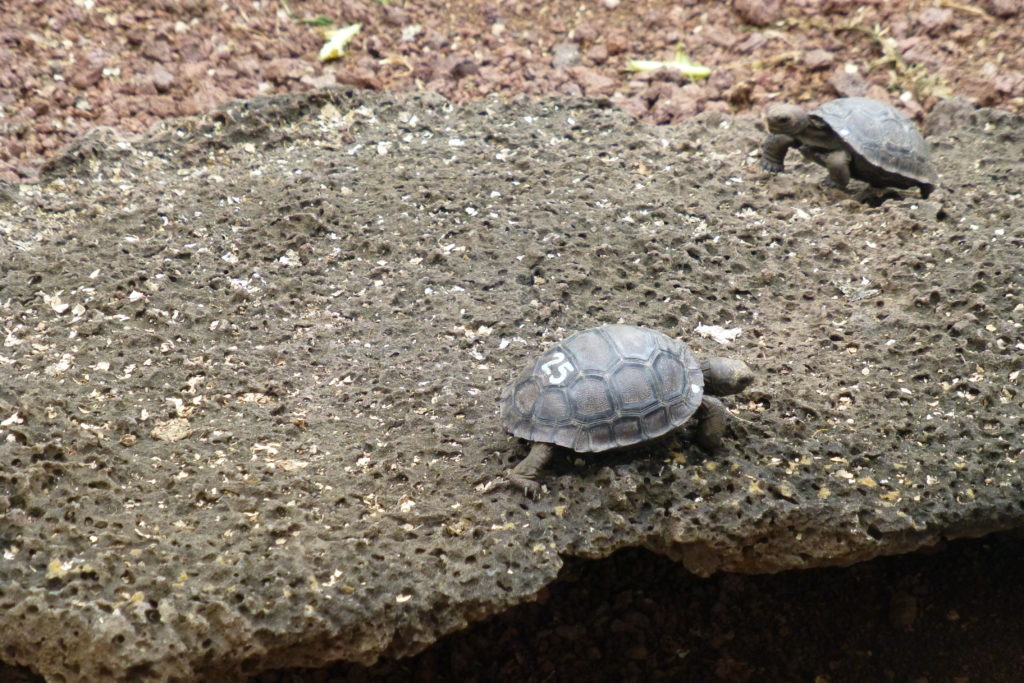

Wow, what a trip and we learned so much! Unfortunately, we did get a GI bug that hit both Mike and I hard. Mike had to skip one full day and I had to skip one afternoon. I think our immune systems were run down from the flu the prior week. It was pretty awful, but glad it was over fairly quickly and we didn’t miss too much!
The Galapagos were truly amazing to explore via our cruise. I’m so glad that Mike picked it as his number 1 and that we made it happen. The animals were super cool to see and learn about. The landscapes were gorgeous, and we just had an amazing time. Ecuador has been full of adventure for the Raff’s and after 5 weeks, I was feeling a bit sad to say goodbye. It was time to move south to Uruguay.

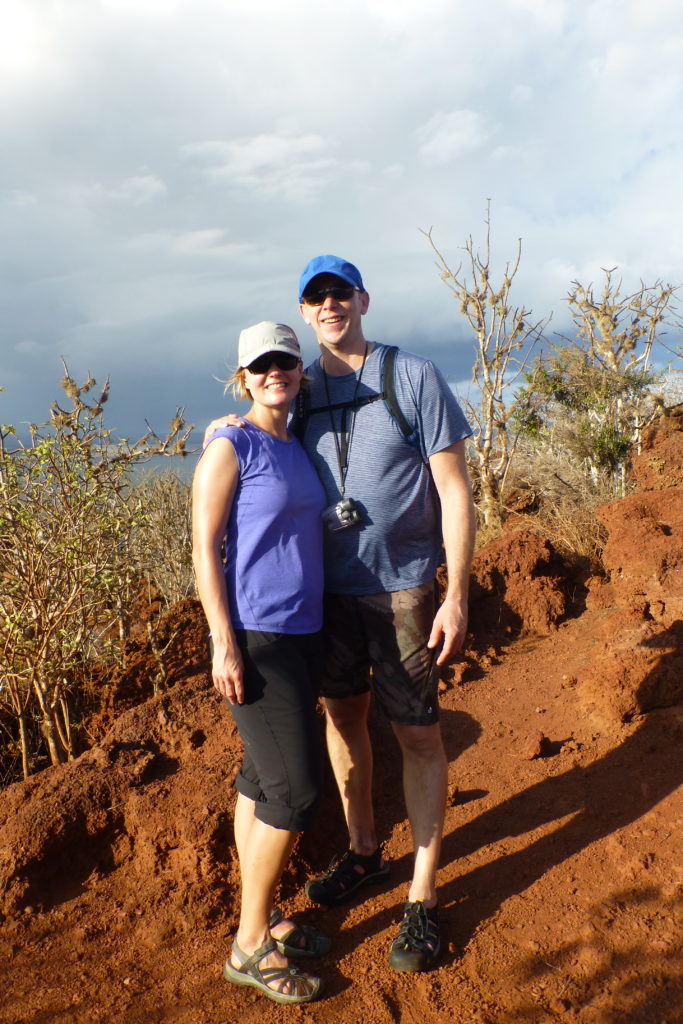



What an adventure! Great write-up and pixs. The whole thing just makes me want to hop on down!!!!!!
Sarah says thank you even though I’m replying! It was an amazing place; you would love it.
Love here your write up of the trip and seeing your pictures. I might have to pirate some of them for my book!! Look us up if you are in the Smokey’s
Hi Peggy and Pat,
Good to hear from you! What a great adventure! I think you talked us in to heading your way in a few months…